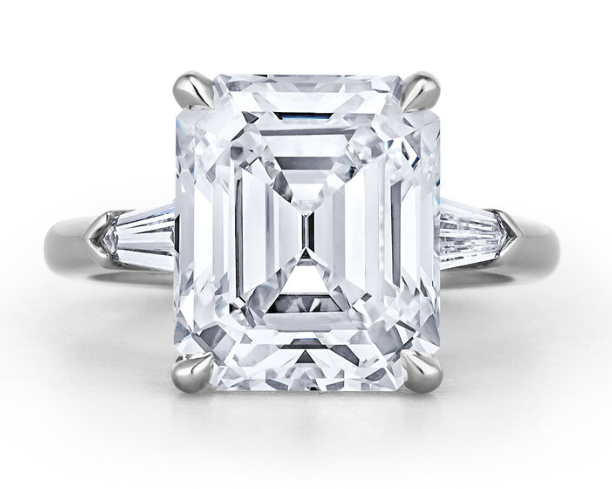Natural Diamonds VS. Lab Grown Diamonds – And The Pressure To Choose
Posted on March 31, 2023

In a rapidly changing world, “Lab Grown Diamonds” have become a hot topic -gaining traction as an ethical, cost-effective alternative to traditional natural diamonds. However, lab diamonds fall short in a number of key ways, all of which are important to consider before making a major purchase. As jewelry experts, we’ve been a part of love stories for decades, and choosing your perfect diamond is where your story begins.
The allure of diamonds has always been that they are an incredible, natural product of the earth that took millions of years to form. That appeal is lost when they are mass- produced in a factory. Lab created diamonds are not finite like their natural counterparts, so there is no guarantee that they will hold any value in the future particularly as their supply continues to soar. In a statement from the Natural Diamond Council, they underscore that “Diamonds are becoming rarer every day because no new significant deposits have been discovered in about 30 years. However, lab-grown diamonds can be manufactured in potentially unlimited quantities similar to any manufactured product, thus they are not finite and cannot be considered rare.” You may save costs today by purchasing a lab grown diamond, but it may be worth next-to-nothing in the future. Furthermore, many retailers do not accept trades on lab created diamonds, thus leaving its reliability up for debate.
There is nothing rare or distinct about a lab grown diamond. Natural diamonds are considered heirlooms often passed on through generations; they represent lifelines – and can be traced back billions of years to the deepest corners of the earth. Many claim a lab created diamond has the same physical and chemical properties as a natural diamond with exception to their origin. It begs the question: If it looks like a diamond, and is created like a diamond, then it must be a diamond? The marketing behind lab grown stones fails to give a balanced view of reality. While there is an appeal to purchase a stone with the same molecular makeup and look just like a natural diamond, the similarities end there. The picture is crystal clear – lab grown diamonds are almost worthless in cultural or heirloom value, and verifiably far less in financial value than natural diamonds. They are a product of technology, not of nature, and there is a clear lack of transparency to the consumer.
Lab grown diamonds are created in factories using either extreme heat or extreme pressure, and are marketed with words such as “ethical” and “sustainable”. The Federal Trade Commission (FTC) says lab grown diamond companies’ claims of eco-friendliness are “difficult to substantiate.” The FTC has also issued several warnings in the past year to jewelry brands claiming that lab grown alternatives are sustainable. Growing diamonds in a lab requires an exorbitant amount of electricity using extreme temperatures and pressures, which must be maintained constantly for weeks or months depending on the size of the diamond being grown. Brands and consumers are too readily embracing lab created diamonds as a sustainable solution without scrutinizing their full impacts, while overlooking progress made within the mined diamond industry. Conversely, diamond mines have drastically improved mining practices to not only protect the environment around them, but also improve it. According to the Natural Diamonds Council, “Not only does the modern diamond mining industry depend on natural resources, but it is committed to reducing our impact on the Earth as much as possible. The many members that make up our core alliance are all actively working on programs and initiatives that will reduce our collective carbon footprint.”
As a third-generation family jeweler, we strive to educate our clients so they may make an informed decision on purchases that keep family history alive from one generation to the next. Reflecting on the future of the diamond industry, it remains unclear whether the lab created diamond buzz will endure the test of time.
Nevertheless, true love is rare – and so is a natural diamond.
Author: Meagan Blanco

